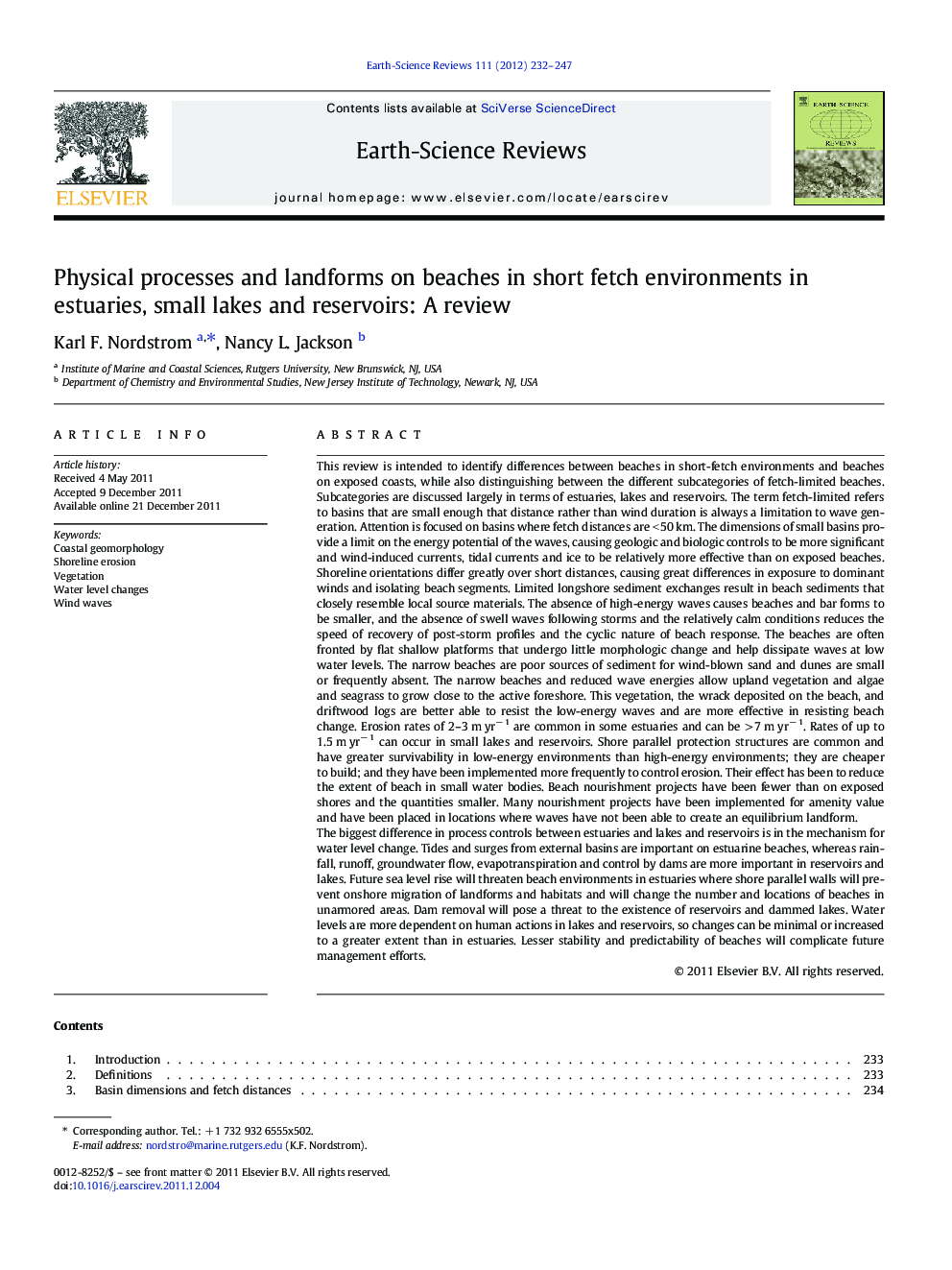| کد مقاله | کد نشریه | سال انتشار | مقاله انگلیسی | نسخه تمام متن |
|---|---|---|---|---|
| 4725987 | 1639995 | 2012 | 16 صفحه PDF | دانلود رایگان |

This review is intended to identify differences between beaches in short-fetch environments and beaches on exposed coasts, while also distinguishing between the different subcategories of fetch-limited beaches. Subcategories are discussed largely in terms of estuaries, lakes and reservoirs. The term fetch-limited refers to basins that are small enough that distance rather than wind duration is always a limitation to wave generation. Attention is focused on basins where fetch distances are < 50 km. The dimensions of small basins provide a limit on the energy potential of the waves, causing geologic and biologic controls to be more significant and wind-induced currents, tidal currents and ice to be relatively more effective than on exposed beaches. Shoreline orientations differ greatly over short distances, causing great differences in exposure to dominant winds and isolating beach segments. Limited longshore sediment exchanges result in beach sediments that closely resemble local source materials. The absence of high-energy waves causes beaches and bar forms to be smaller, and the absence of swell waves following storms and the relatively calm conditions reduces the speed of recovery of post-storm profiles and the cyclic nature of beach response. The beaches are often fronted by flat shallow platforms that undergo little morphologic change and help dissipate waves at low water levels. The narrow beaches are poor sources of sediment for wind-blown sand and dunes are small or frequently absent. The narrow beaches and reduced wave energies allow upland vegetation and algae and seagrass to grow close to the active foreshore. This vegetation, the wrack deposited on the beach, and driftwood logs are better able to resist the low-energy waves and are more effective in resisting beach change. Erosion rates of 2–3 m yr− 1 are common in some estuaries and can be > 7 m yr− 1. Rates of up to 1.5 m yr− 1 can occur in small lakes and reservoirs. Shore parallel protection structures are common and have greater survivability in low-energy environments than high-energy environments; they are cheaper to build; and they have been implemented more frequently to control erosion. Their effect has been to reduce the extent of beach in small water bodies. Beach nourishment projects have been fewer than on exposed shores and the quantities smaller. Many nourishment projects have been implemented for amenity value and have been placed in locations where waves have not been able to create an equilibrium landform.The biggest difference in process controls between estuaries and lakes and reservoirs is in the mechanism for water level change. Tides and surges from external basins are important on estuarine beaches, whereas rainfall, runoff, groundwater flow, evapotranspiration and control by dams are more important in reservoirs and lakes. Future sea level rise will threaten beach environments in estuaries where shore parallel walls will prevent onshore migration of landforms and habitats and will change the number and locations of beaches in unarmored areas. Dam removal will pose a threat to the existence of reservoirs and dammed lakes. Water levels are more dependent on human actions in lakes and reservoirs, so changes can be minimal or increased to a greater extent than in estuaries. Lesser stability and predictability of beaches will complicate future management efforts.
Journal: Earth-Science Reviews - Volume 111, Issues 1–2, February 2012, Pages 232–247